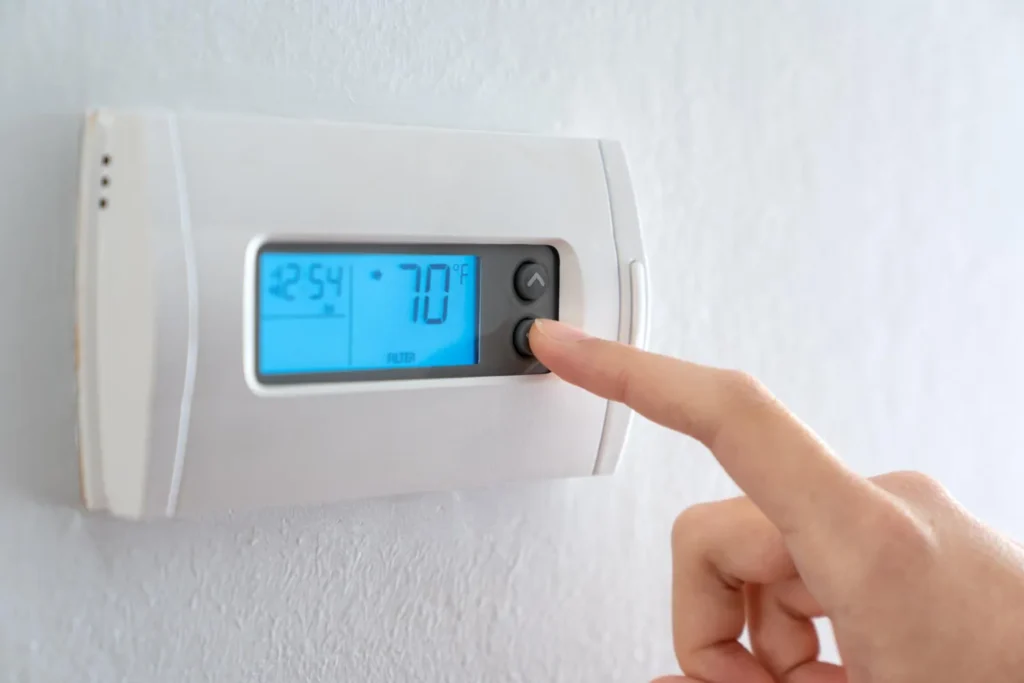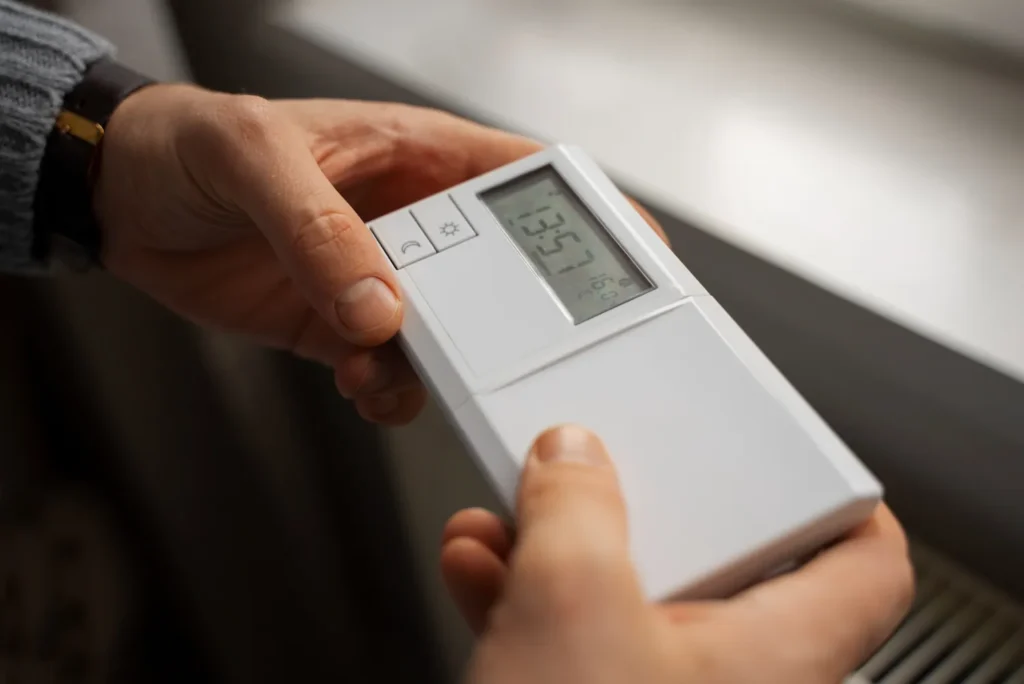Thermostats play a crucial role in ensuring the optimal performance of your air conditioning system. However, when they malfunction, the consequences can be significant. Inaccurate temperature control, constant cycling, failure to start or shut off, and reduced energy efficiency are some of the impacts of a faulty thermostats on AC unit. In this informative blog post, we will research the effects of a defective thermostat on air conditioner performance, exploring how it can lead to discomfort, increased energy bills, and even premature wear and tear on your system.
Key Takeaways:
- Inaccurate Temperature Control: A faulty thermostat on AC can result in erroneous temperature control, leading to discomfort and uneven cooling throughout your space.
- Constant Cycling: Short cycling caused by a defective thermostat reduces energy efficiency and puts unnecessary strain on the air conditioning system.
- Reduced Energy Efficiency: A malfunctioning thermostat can cause the air conditioner to run longer than necessary, impacting energy consumption and increasing utility bills.
Understanding Thermostat Functionality

Essential Operation of a Thermostat
Some thermostats serve as the command center for air conditioning systems, regulating temperature and ensuring comfort. For an air conditioner to function efficiently, the thermostat must accurately signal the system to turn on or off based on desired temperature settings. It also helps maintain a consistent temperature by regulating the cooling cycle duration.
Advanced Thermostat Features and Smart Technology
Smart thermostats offer advanced features that can significantly enhance the efficiency of an air conditioning system. Some of the features include:
- Remote access: Allows users to control the thermostat from anywhere using a smartphone or computer.
- Learning capabilities: Smart thermostats can learn your schedule and adjust temperatures for energy savings.
Smart thermostats offer convenience and improve energy efficiency by optimizing cooling cycles based on usage patterns and preferences.
Symptoms of a faulty thermostats on AC
Inconsistent Temperature Regulation
faulty thermostats on AC can lead to inconsistent temperature regulation, causing discomfort and uneven cooling throughout your space. One of the most noticeable effects of a defective thermostat is inaccurate temperature control. You may set the thermostat to a specific temperature, but the air conditioner fails to reach or maintain it, leading to inconsistent cooling levels.
Solution
- Inaccurate Temperature Control
- Ensure correct thermostat settings and calibrate accordingly.
Unexplained Cycling of the AC Unit
Any unexplained cycling of the AC unit, which turns on and off frequently, can indicate a faulty thermostats on AC. This constant cycling reduces energy efficiency and puts unnecessary strain on the system, potentially leading to premature wear and tear.
Understanding the Role of the Thermostat in the air conditioning system is crucial to noticing these symptoms and taking action promptly to diagnose and fix the issue. It is a temperature-sensitive switch, signaling the air conditioner to turn on or off based on the desired temperature settings. Understanding the effects of a faulty thermostats on AC and following the steps outlined in diagnosing and fixing the issue can ensure optimal comfort and efficiency in your home.
Impact on Air Conditioner Performance
Disrupted Comfort and Temperature Control
Impact: Unlike a properly functioning thermostat that regulates the temperature seamlessly, a faulty thermostat can disrupt the comfort of your space. Inaccurate temperature control is expected when the air conditioner fails to reach or maintain the desired temperature setting, leading to discomfort and uneven cooling throughout the room.
Consequence
- Constant Cycling
- Reduces energy efficiency and puts unnecessary strain on the system, potentially leading to premature wear and tear.
- Failure to Start or Shut Off
It may prevent the air conditioner from operating correctly, resulting in either no cooling or continuous operation, leading to wasted energy and increased utility bills.
Implications for System Longevity and Maintenance
For: Temperature control is crucial for your air conditioning system’s overall health and longevity. A malfunctioning thermostat can lead to increased energy consumption and costs due to the system running longer than necessary.
Regular maintenance and timely repairs are crucial to ensure the efficiency and effectiveness of your air conditioner. Ignoring issues with the thermostat can harm the overall performance and longevity of the system.
Diagnosing Thermostat Issues
Not all issues with air conditioning systems are due to mechanical problems – sometimes, the thermostat can cause disruption. Identifying the root cause of a malfunctioning thermostat is crucial to restore optimal efficiency to your AC unit.
Identifying Incorrect Settings
Occasionally, The solution to a malfunctioning thermostat could be as simple as correcting the settings. Incorrect temperature settings can mimic a faulty thermostats on AC, leading to discomfort and inefficient cooling. Ensure that the thermostat is set to the correct mode (cooling) and that the temperature settings are accurately adjusted to match your comfort preferences.
Battery Replacement and Its Effects
Incorrect battery levels in a thermostat can impact its ability to function properly, potentially resulting in issues like inaccurate temperature readings or the system failing to turn on and off as intended. Replacing the batteries promptly can resolve these problems and restore the thermostat’s functionality.
To avoid unexpected thermostat malfunctions, the batteries must be replaced periodically and proactively as a preventive maintenance measure is recommended. Regularly checking and replacing the batteries can prevent disruptions in your air conditioning system and ensure consistent performance.
Calibration and Cleaning Procedures
Replacement of batteries is only sometimes the end of the solution. Dust and debris accumulation can impact the thermostat’s sensors, affecting accuracy. Calibration and cleaning procedures can help optimize the thermostat’s performance, ensuring reliable temperature regulation and better energy efficiency.
Procedures for cleaning and calibrating the thermostat should be done according to the manufacturer’s instructions. Regular maintenance of the thermostat through cleaning and calibration can prolong its lifespan and enhance the overall efficiency of your air conditioning system.
Investigating Electrical Concerns

When dealing with a faulty thermostats on AC, it’s crucial to investigate potential electrical concerns affecting its performance. One of the critical areas to focus on is the wiring and connections within the thermostat system. An issue with loose or damaged wiring can disrupt the communication between the thermostat and the air conditioning system, leading to malfunctions and decreased efficiency.
Importance of Wiring and Connections
Any signs of loose or damaged wiring should be addressed promptly to ensure the proper functioning of the thermostat. Inspecting and maintaining the wiring connections can prevent potential system performance disruptions. By ensuring that all connections are secure and in good condition, you can enhance the overall efficiency of your air conditioner and reduce the risk of unnecessary breakdowns.
Step-by-Step Troubleshooting Techniques
For instance, one effective troubleshooting technique involves checking the wiring and connections within the thermostat system. By carefully examining the wires for any signs of wear or damage, you can identify and address potential issues causing the thermostat to malfunction. Another step is to use a separate thermometer to compare the temperature reading on the thermostat with the actual temperature in your home. This can help determine if the thermostat accurately detects and responds to temperature changes, leading to more efficient cooling operation.
Investigating Electrical Concerns – Step-by-Step Troubleshooting Techniques
Address potential disruptions in performance caused by wiring issues. Check wiring and connections for wear or damage. Regularly inspect and maintain wiring connections for enhanced efficiency. Use a separate thermometer to compare temperature readings for accuracy.
Note that addressing electrical concerns and troubleshooting potential issues systematically can help you effectively identify and resolve problems with a faulty thermostats on AC. By taking the time to investigate and address wiring and connection issues, you can ensure optimal performance and efficiency of your air conditioning system.
Solutions and Repairs
How to Test Thermostat Accuracy
All homeowners should perform simple tests to ensure their thermostat is accurately controlling the temperature of their home. Place a separate thermometer near the thermostat and compare the two readings for optimal performance. If there is a significant difference, it may indicate a faulty thermostats on AC that needs attention. Conduct this test periodically for accurate results to catch any discrepancies early on and prevent further issues with your AC system.
When to Consider Thermostat Replacement
Replacement of a thermostat may be necessary if testing shows inaccuracies, frequent short cycling, or failure to start or shut off properly. Consider replacing the thermostat if it is over ten years old or unable to keep up with the desired temperature settings. A new thermostat can improve the efficiency of your air conditioning system and enhance overall comfort in your home.
Selection and Installation of a New Thermostat
When selecting a new thermostat, consider programmable settings, innovative technology, and compatibility with your AC system. A professional should install a new thermostat to ensure proper calibration and functioning. A new thermostat can significantly improve your home’s energy efficiency and comfort levels, especially during the hot summer.
Optimizing Thermostat Usage for Enhanced Efficiency
To maximize the efficiency of your air conditioning system, it is imperative to optimize your thermostat usage. By following some simple tips and strategies, you can ensure that your AC operates at its peak performance while saving energy and keeping your utility bills in check.
Programming and Scheduling Tips
- Set a Program: Program your thermostat to maintain a comfortable temperature at home and adjust it when you are away to conserve energy.
- Utilize Scheduling: Use programmable settings to create a cooling schedule that aligns with your daily routine, reducing unnecessary energy consumption.
- Regular Maintenance: Clean and calibrate your thermostat to ensure accurate readings and optimal performance.
- Monitor Usage: Check your energy usage regularly to identify any trends or anomalies that may indicate a malfunctioning thermostat.
Knowing how to program and schedule your thermostat effectively can lead to significant energy savings and improved comfort levels in your home. By implementing these tips, you can optimize the performance of your air conditioning system and reduce your carbon footprint.
Leveraging Smart Thermostats for Energy Savings
Enhanced with advanced technology, smart thermostats offer a range of features that can help you save energy and increase the efficiency of your air conditioning system. By allowing remote access and providing real-time data on energy usage, smart thermostats empower you to make informed decisions that optimize your cooling needs. With the ability to learn your habits and preferences, smart thermostats can automatically adjust settings for maximum comfort and efficiency, ultimately reducing energy consumption and lowering utility bills.
Summing Up
With this in mind, the impact of faulty thermostats on AC efficiency cannot be understated. A malfunctioning thermostat can lead to inaccurate temperature control, constant cycling, failure to start or shut off, and reduced energy efficiency. These issues result in discomfort for occupants and contribute to higher energy bills and potential damage to the air conditioning system.
It is essential to regularly check and maintain your thermostat to ensure it functions properly. By following the steps outlined in this article to diagnose and fix thermostat issues promptly, you can help maximize the efficiency and performance of your air conditioning system. Investing in a quality thermostat and seeking professional help when needed will ensure optimal comfort and energy savings in your home.
FAQ About faulty thermostats on AC
What is the role of a thermostat in an air conditioning system?
The thermostat acts as a temperature-sensitive switch, signaling the air conditioner to turn on or off based on desired temperature settings and helping maintain a consistent temperature by regulating the cooling cycle duration.
What are the effects of a defective thermostat on air conditioner operation?
A: A faulty thermostat can lead to inaccurate temperature control, constant cycling (short-cycling), failure to start or shut off properly, and reduced energy efficiency due to prolonged running times.
How can I diagnose a faulty thermostat in my air conditioning system?
Start by checking the thermostat settings, replacing the batteries if necessary, cleaning and calibrating the thermostat, inspecting wiring and connections for any damage, and testing the thermostat using a separate thermometer to compare readings.
How can I fix a defective thermostat in my air conditioning system?
If all else fails, replacing the thermostat with a new one may be necessary. Choose a compatible thermostat and consider upgrading to a programmable or smart thermostat for convenience and energy savings.
Why is it essential to promptly address a faulty thermostat in an air conditioning system?
Postponing the repair of a faulty thermostats on AC can lead to discomfort, reduced energy efficiency, and increased utility bills. It is more cost-effective to address the issue immediately after noticing symptoms like odd noises or ineffective cooling in the room.
